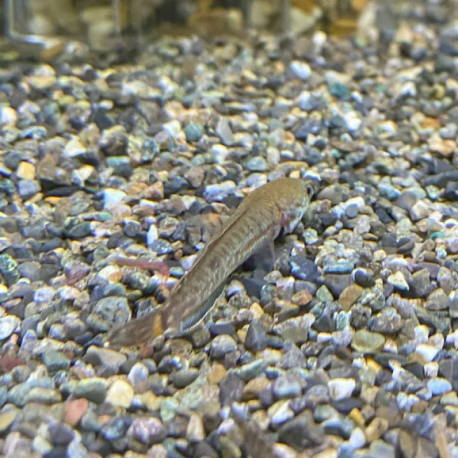Lepidocephalichthys Thermalis
Cypriniformes Print
More info
Datasheet
| Minimum Tank Size | 40 litres / 10.57 US gallons |
| Maximum Size | 5.0cm / 1.97inches |
| Temperature | 20°C / 68.00°F - 25°C / 77.00°F |
| Hardness | 2.02dgH / 36ppm - 12.05dgH / 215ppm |
| pH | 6.0-8.0 |
Behaviour
Lepidocephalichthys spp. are peaceful both among themselves and other fishes, with no known reports of them causing harm to tankmates, although they may feed on eggs or fry. These loaches thrive when kept in the company of conspecifics, ideally in groups of four or more individuals. L. thermalis is a great addition to communities comprising appropriately sized stream-dwelling fish. Suitable tankmates for these loaches include small, peaceful cyprinids, rheophilic loaches like Gastromyzon, Pseudogastromyzon, Beaufortia, or Sewellia, and less territorial nemacheilids. Additionally, stream-dwelling gobies from genera such as Sicyopterus, Stiphodon, Rhinogobius, and Lentipes can also make fascinating additions to the community. However, territorial or aggressive bottom-dwellers such as certain nemacheilid loaches and cichlids might not be suitable companions.
Feeding and Diet
These loaches are probably micropredators in nature, feeding on insect larvae and similar prey items. In an aquarium setting, they readily accept sinking dried foods but should also be offered regular meals of small live and frozen foods like Daphnia, Artemia, and bloodworms.
Reproduction & Dimorphism
There is still scarce information on the breeding habits of Lepidocephalichthys spp. in captivity. Presumed to be seasonal spawners in their natural habitat, there are no documented breeding instances in aquarium conditions. Mature males of these loaches exhibit enlarged pectoral fins with fused, thickened innermost rays forming a structure known as the lamina circularis. Meanwhile, adult females tend to be slightly larger and heavier-bodied than males.
Habitat and Distribution
- L. thermalis* displays a preference for headwaters and streams with clear, flowing water, often characterized by substrates of rocks, pebbles, and submerged tree roots. They can also be found in areas with muddy or sandy substrates where leaf litter accumulates, and have even been discovered in hot springs, their type locality. The distribution of L. thermalis spans from the "Hot waters of Cania, Sri Lanka" to regions in Peninsular India, including the Godavari, Krishna, Palar, Kaveri, and Periyar river drainages.


